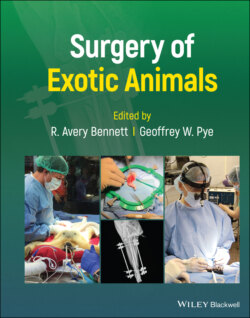Читать книгу Surgery of Exotic Animals - Группа авторов - Страница 102
Analgesia, Anesthesia, and Fluids
ОглавлениеVarious models have been used to investigate nociception, and nociceptive receptors are present in fish, predicating the importance to minimize noxious stimulations associated with fish surgery (Weber 2011a). The use of a perioperative opioid drug is currently recommended. Morphine 5 mg/kg intramuscularly (IM) has been proposed in koi (Cyprinus carpio) (Baker et al. 2013). Morphine at this dose caused temporary bouts of excitability and, if used, owners should be made aware of potential adverse effects (Baker et al. 2013). The pharmacokinetics of morphine have also been reported in goldfish (Carassius auratus) and salmon (Salmo salar) administered, respectively, 40 and 100 mg/kg IM and mean elimination half‐lives were 12.5–13.5 hours (Nordgreen et al. 2009). Nonsteroidal anti‐inflammatory drugs are used as part of multimodal analgesia in fish. Ketoprofen (Harms et al. 2005; Davis et al. 2006; Ward et al. 2012), carprofen (Mettam et al. 2011), and meloxicam (Larouche 2018; Fredholm et al. 2016) have been evaluated in fish. Adverse effects of other non steroidal anti‐inflammatory drugs have been reported and empirical use at high doses should be avoided (Schwaiger et al. 2004; Lovy et al. 2007). In‐depth reviews of fish anesthesia are available (Stoskopf and Posner 2014; Whiteside 2014). Perioperative fluids are chosen based on the plasma osmolarity of the species, ranging between 900 and 1500 mOsm/l in elasmobranchs (Hadfield et al. 2010).
